This is not the ocean:
Indeed, even THIS is not the ocean:
Before you start thinking that the folks at DSN are losing their marbles, bear with me! The truth is that none of these three all-too-familiar and quintessentially marine images reflects the actual reality of what most of the ocean is like. Here’s why. At their most basic, the above three images can be represented like this (respectively):



Our experience of the ocean is almost entirely defined by our interactions along its margins: along the coast, sitting the bottom or floating on the surface. More often, it’s some combination of these, like a coral reef, which can be all three: coastal, benthic and also in reach of or transcending the surface at least some of the time. In all of these marginal habitats, life is heavily influenced by the margin itself: benthic things have specific adaptations to interacting with the substrate, while pelagic things have adaptations for interacting with the surface, and so on. In many of these places it’s sunny, it’s warm and there are lots of animals, at least relatively speaking. The point of my post is that the rest of the ocean, an overwhelming majority in fact, looks like this:
That’s because the part of the oceans not included in coastal zones, on the bottom, or within sunlight’s reach of the surface make’s up about 94% of the volume of the ocean (and of course, the other 6% looks like this at night time, or 50% of the time!). Average ocean depth is around 12,100 feet, with sunlight penetrating the top 650 feet or so. The other 11,450 feet consists of pitch dark and perpetual blackness, with no margin or structure to disrupt the inky 3-dimensional void. It’s also uniformly and numbingly cold; below the reach of sunlight it is about 4°C or 39°F everywhere in the world, regardless of whether you are off Greenland or Hawaii. About the only thing that isn’t uniform throughout this habitat is pressure, which varies greatly with the depth of any given cube of water, but is generally a great deal more than any experienced along coasts or at the surface, although it must be said that bottom-dwelling communities in the deepest parts of the ocean experience the greatest pressures of all.
There are animals in the void too, of course, but they are sparse in the extreme and without extrinsic light and without any habitat structures they are foreign in form. Often delicate and flimsy, diaphanous or gelatinous, they exist in a world without walls, floor or ceiling, without any structure at all to define the boundaries of their environment or even to serve as some spatial point of reference. There are animals here that will not during their lifetime experience a solid surface, or even a fluid one such as the boundary where water meets air; they and their ancestors appear and disappear from the void, never alighting on anything. To them, a wall might be as incomprehensible as a black hole is to us. They are born, live out their life histories and die in a frigid, timeless, structureless void.
I’m not a religious guy, but the bible opens with a statement to the effect that “the earth was formless and empty, darkness was over the surface of the deep” and I can’t help but be struck that the world described by this passage, before God supposedly created light and began to shape the world, bears a striking resemblance to the vast majority of the oceans that exist today. We think we know the oceans, but we don’t, not really, because the majority of the oceans are an icy black void inhabited by creatures as alien as any we can expect to find in that other unceasing void, the one we call space.

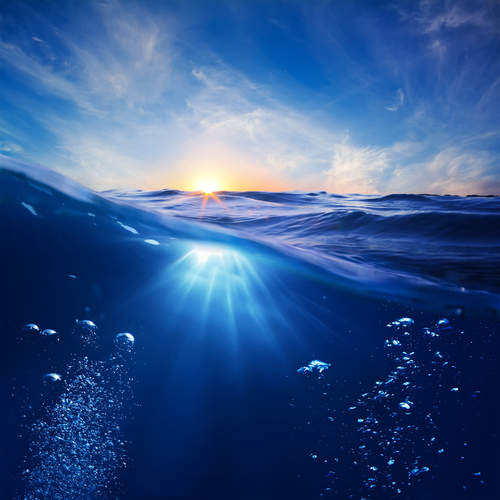
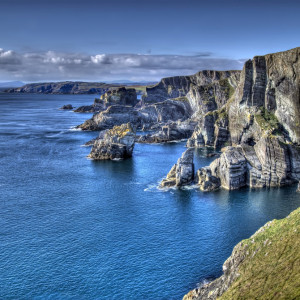
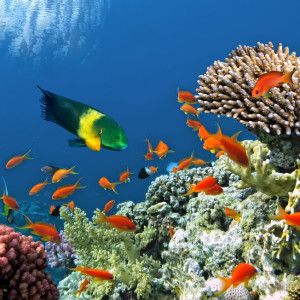
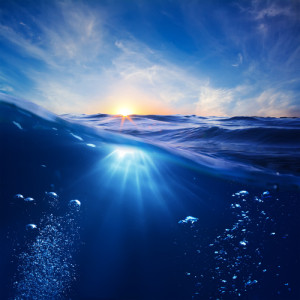



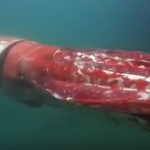
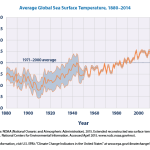
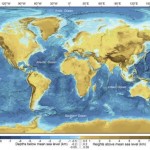
“The other 11,450 feet consists of pitch dark and perpetual blackness…” Not so. From Light and Water (Mobley 1994): Cherenkov radiation from relativistic electrons emitted in the decay of naturally occurring potassium-40 ions generates about 1.2×10^6 visible photons/m^2 /s at all depths in very clear waters. Their nighttime measurements to depths of 4300 m in clear waters near Hawaii showed a typical background “glow” of order 10^7 photons/m^2/s, which includes bioluminescence as well as sources such as potassium-40 decay. Thus it is never completely dark at even the greatest depths, even though no solar photons are present. If we assume photons of wavelength 450 nm, then 10^7 photons/m^2 s corresponds to 4×10^-12 W/m^2 which, interestingly, is just *above* the estimated threshold for detectability by some deep-sea fish. “[Emphasis added.]
You should credit Kevin Raskoff for his photo.
About the comment on darkness, it is functionally dark down there, even at 1000 meters, other than bioluminescence. You can’t give a flux number and say it is above detectability for some fish if those photons are isotropically emitted and diffusely distributed. Detection is a function of contrast vs background, and that would be the background.
You’re absolutely right. My apologies for not crediting Kevin.
Very well written and indeed- what people like to see as the ocean is far more than the beaches to hang out, the fancy coral reef diving etc. It is home to far more creatures that we will ever know and probably never understand.
450 nm wavelength? So the deep sea is tinted slightly green?!?! Is that what this means?
This indeed was a great post, coinciding with an almost mystical insight I had about another field of knowledge.
Also Kevin Raskoff’s photo of Marthus Orthocanna
(which you have removed now) crowned it.
Fortunately, I found it again, from here:
http://eu.lumas.com/pictures/kevin_raskoff/hidden_ocean_8_brmarrus_orthocanna/
As what comes to space, and its seas, please see also this:
http://saturn.jpl.nasa.gov/news/cassinifeatures/feature20141110/